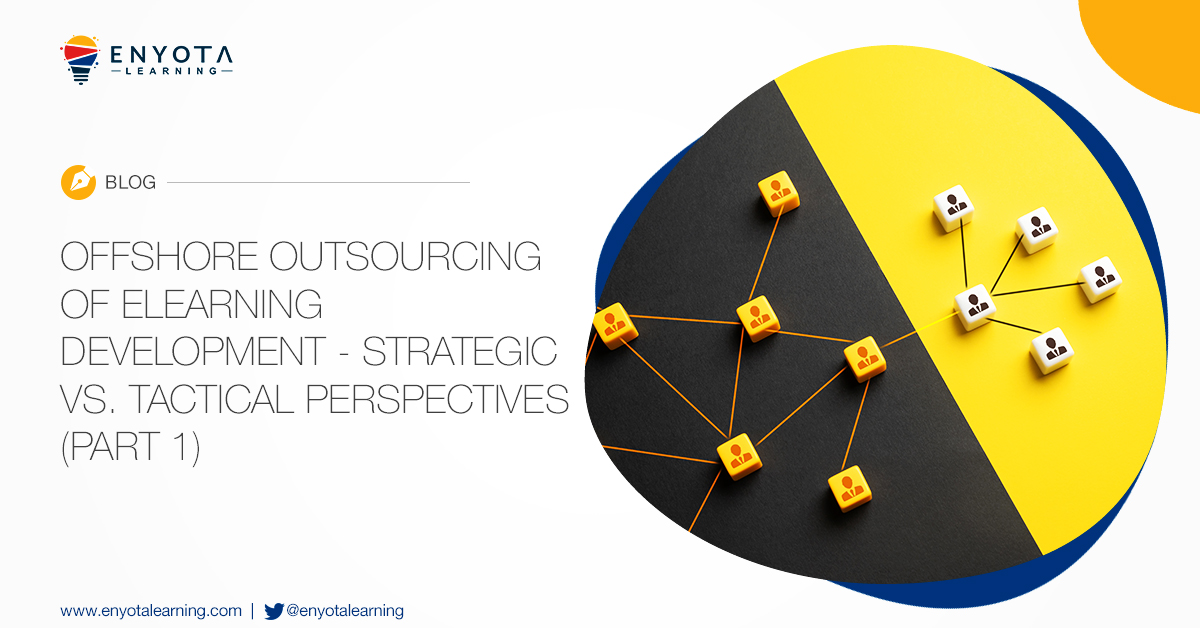The Best Microlearning Platform to Support All Your Training Needs
Looking for the best microlearning platform that is designed to meet your unique training needs? Look no further than Abara LMS – the ultimate mobile-first learning management system that offers a perfect blend of ease-of-use, top-notch user interface, and advanced features at competitive prices.
Before we move ahead, it’s important to understand that Abara LMS is one of the best microlearning platforms hosting built and maintained by eNyota Learning.
At Abara LMS, we strive to deliver effective training that is essential to driving your business’ success. That’s why we have built a cutting-edge microlearning platform that allows you to create and deliver bite-sized, engaging, and interactive training content with the intention to engage and retain learner interest.
Our mobile-first approach allows learners to access their training content anytime, anywhere, and on any device, making learning on-the-go easier than before. Our intuitive user interface appeals to learners of all ages and skill levels, ensuring maximum engagement and knowledge retention.
Our microlearning platform works well for businesses of all sizes, from small startups to large corporations. Whether you intend on training a small team or a large workforce, our platform can handle it all. With our easy administration features, you can manage all aspects of your training program without leaving the microlearning platform. For example, from creating and assigning courses to tracking progress and analyzing performance, Abara LMS can do them all.
At Abara LMS, we believe that the key to effective microlearning is simplicity. As a result, our platform is easy to use, even for those with little to no technical expertise. With our intuitive drag-and-drop course builder, creating engaging and interactive microlearning courses becomes even simpler.
Our microlearning platform is also optimized for in-platform search. This allows your training content to easily be discovered by learners using relevant keywords. We understand the importance of visibility in the online world, and we have designed our microlearning platform to help you get noticed.
In summary, Abara LMS is the best microlearning platform on the market, offering a mobile-first, user-friendly, and feature-rich learning management system that is perfect for businesses of all sizes. With our microlearning platform, you can create and deliver engaging microlearning courses, track progress and analyze performance, and grow your business with ease. Don’t take our word for it, Try Abara LMS today and experience the power of microlearning! You can schedule a demo with us by reaching out to contact@enyotlearning.com, we’ll even give you a demo account where you can try all our features!
If you are still wondering what microlearning is and if it’s correct for you? Read on to find out!
What is Microlearning?
Here’s a quick and short (micro-video) on what is microlearning and its importance!
Microlearning is a technique that recognizes learners’ limited attention spans and suggests breaking down complex training topics into bite-sized modules that take no more than 5-10 minutes to complete. Learners are then expected to complete each module in an ordered progression, moving on to the next module only after completing the previous module. Each module builds upon the ‘primary learning topic’ and reveals more information to the learner as they proceed. This approach has been shown to increase knowledge retention and learner engagement by upwards of 80%.
To create effective microlearning-based eLearning, it’s essential to follow certain guidelines. It’s also wise to work with eLearning experts who have experience in this area. The key to success is not simply what you include in the course, but also what you leave out.
If you’re looking for the best microlearning platform, consider one that prioritizes simplicity and ease of use. Look for a platform that allows you to easily create, deliver, and track microlearning content. It should also offer a variety of engagement features, such as gamification and social learning, to keep learners motivated and engaged. Additionally, the platform should provide robust analytics to help you track learner progress and identify areas for improvement.
Microlearning eLearning breaks down complex topics into short 5-minute training modules that are grouped together under one umbrella topic. Learners complete these modules and then attempt an assessment to unlock the next umbrella topic and its modules.
The modules typically use interactive videos, whiteboard animations, and text-based slides with images to simplify and structure complex topics in a logical order.
This approach is most effective when combined with a microlearning platform, also known as an LMS, which stores micro-modules within its knowledge or media repository where other modules such as assessments modules are also stored.
An LMS also keeps records of assessments attempted, passed, and failed, which can be accessed and compiled by L&D whenever required. Microlearning is practical and allows learners to approach each topic at their own pace, without having to sit through long courses for extended periods.
If you’re looking for the best microlearning platform, choose one that stores content in a structured manner, allows for easy navigation, and provides analytics to track learner progress.

Why Is Our Software the Best Microlearning Platform for You?
We Invested in Design and Architecture to Build the Best Microlearning Platform
At Abara LMS, we take pride in our ability to deliver the best microlearning platform currently available for businesses of all sizes. How did we do it? We leveraged our extensive experience in building microlearning courses and our experience in building training software to create a platform that is designed with the learner and administrator in mind.
Our team of experts have a deep understanding of what it takes to create effective microlearning content that engages and inspires learners. We have built countless microlearning courses across a range of industries, and we have seen firsthand what works and what doesn’t. This experience has allowed us to refine our approach and build a microlearning platform that is built to not only host microlearning courses but also build microlearning courses within the LMS.
But it’s not just our experience with microlearning that sets us apart. We have also built numerous training software solutions over the years, giving us a unique perspective on the technology and architecture needed to support effective training.

We have taken this expertise and built it into the very design and architecture of our microlearning platform, ensuring that it is robust, scalable, and easy to use.
With our experience and expertise, we have created a microlearning platform that is optimized for modern learners and modern businesses. Our platform is mobile-first, user-friendly, and packed with advanced features that make it easy to create, deliver, and track microlearning courses. So if you’re looking for the best microlearning platform on the market, look no further than Abara LMS. Contact us at contact@enyotalearning.com and we’ll setup up a trial LMS account with dummy data for you!
Benefits of Microlearning
Microlearning is a learning strategy that involves breaking down complex topics into bite-sized, easily digestible sessions. This approach acknowledges that learners have limited attention spans and may struggle to retain information from longer, more traditional eLearning courses.
By breaking down topics into shorter sessions, microlearning helps learners to better absorb and retain information. It also enables self-paced development and learning, allowing learners to progress through the material at their own pace, without feeling overwhelmed or rushed.
Moreover, microlearning sessions can be designed to be highly engaging and interactive, using a variety of media formats such as videos, animations, and gamification. This makes learning more enjoyable and can help to boost learner motivation and engagement.
In addition, microlearning can be easily integrated into busy schedules, making it an ideal approach for learners who may not have much time to dedicate to training. It can be accessed on demand, allowing learners to fit learning around their other commitments.
Overall, microlearning’s focus on bite-sized sessions and self-paced development aligns well with modern learners’ preferences and learning styles. It is an effective approach for enhancing knowledge retention and engagement, while accommodating the time constraints and attention spans of learners.
However, the benefits of designing microlearning courses reaches far beyond just learner attention spans and self-paced learning.
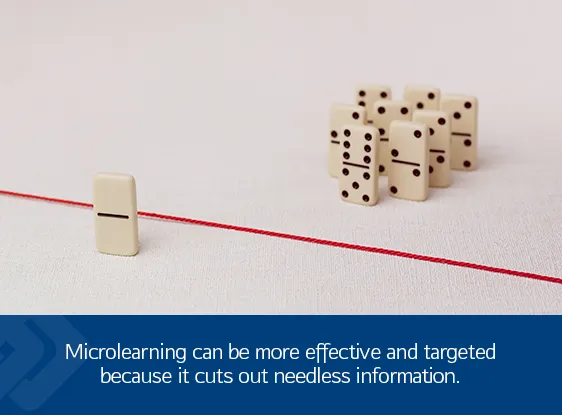
Some Lesser Known Benefits of Microlearning:
It supports mobile learning
It is no surprise that microlearning and mobile learning (mLearning) have become almost inseparable. Microlearning’s short session-based approach pairs perfectly with the concept of training people on their mobile devices.
Short videos are easier to consume on mobile phones compared to longer videos, and learners can quickly access a session during periods of free time, whether they’re waiting, traveling, or relaxing in bed. Microlearning fully utilizes the versatility and convenience of mobile phones to deliver training anytime, anywhere, and even on-the-go.
Today, the ability to break training into bite-sized micro formats is a critical element when designing mobile learning. This approach is ideal for learning on-the-go and engaging learners at the same time. If you’re looking for the best microlearning platform for mobile learning, it’s essential to choose one that supports mobile devices and is optimized for mobile viewing. The platform should also offer features like offline access, mobile-first design, and responsive design to ensure a seamless learning experience for mobile learners.
It has known social media applications
It is a well-established fact that microlearning is the primary format of training used by every online training platform available today. Platforms like Udemy, Upgrad, and HubSpot all host their training in a micro format and refer to themselves as microlearning platforms. However, this trend is not limited to these platforms alone.
LinkedIn, the professional social media platform, recently launched its long-anticipated extension, LinkedIn Learning. The extension offers users access to over 2000 courses taught by experts on a variety of topics, for an additional fee.
Despite offering longer courses, LinkedIn Learning also maintains a loyal base of learners who prefer microlearning for all their training needs. These learners appreciate the convenience and flexibility of microlearning, which allows them to complete their training quickly and efficiently, without having to commit to longer, more time-consuming courses.
Learners are versed with micro-format training
It is widely accepted that learners are well-accustomed to consuming training content on popular platforms that almost exclusively use microlearning to train their users. As a result, when organizations implement micro-format training, it is not a surprise to their learners.
In fact, learners are often more receptive to the idea since they are already familiar with this format and are generally comfortable with it.
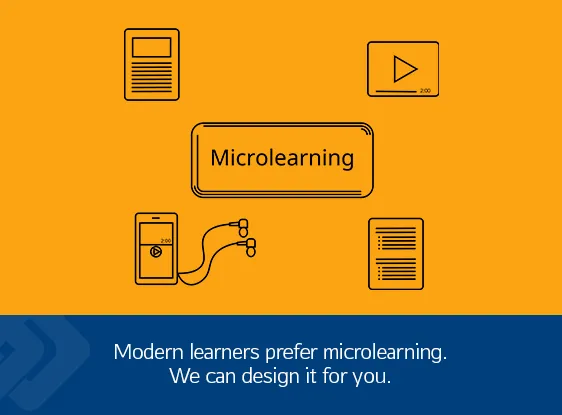
Types of Microlearning
Microlearning is more than just videos. It is any training or piece of content with the ability to quickly deliver training.
Some common types of microlearning services which eLearning providers help to build are:
- Short training videos of trainers speaking
- Animated explainer videos
- PDFs
- PowerPoint slides
- Infographics
- eBooks – 1000 words
- Whitepapers
- Infographics
As visible, any form of content that is short and quickly delivers training or information snippets to learners is a form of micro-format training. Short trainer videos and animated explainer videos are popular micro-training examples. These two learning solutions are popular among organizations implementing microlearning strategies. They deliver maximum impact in a short amount of time.
How to Develop, Design, or Build Microlearning?
So now that we have determined that microlearning is a short and sweet format of training, let us dive into the multiple ways of building or designing microlearning.
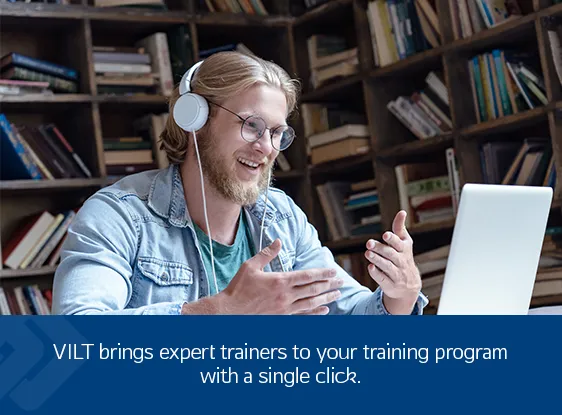
Convert your VILT recorded sessions into microformats
If you have conducted VILT training programs in the past and have recordings of those videos lying around, don’t just store them in an unused folder on your PC. Those recordings are more valuable than you may realize. With a little ingenuity and some updates, you can turn those old VILT clips into brand new microlearning courses.
To do so, update any outdated sections of the recording, add additional assets, and fill in any gaps that may exist. Then, convert these into new microlearning modules and grant access to learners. You can also add these videos to other eLearning courses.
It’s always recommended to recycle old content and breathe new life into it.
Keep the micro-videos at a maximum of 8-10 minutes per module
When referring to microlearning modules, we are discussing 5 to 10-minute segments that are easy for learners to consume and process. Anything exceeding 10 minutes risks losing its effectiveness among learners, as their attention spans begin to wane. Another consideration is the division of highly complex topics into subtopics and determining the appropriate runtime for each section.
Highly complex topics require careful handling. If the segments are too short, important content may be left out. Conversely, if they are too long, the course may be overwhelming for learners.
Balance is key when developing microlearning videos. Maintaining a balance ensures that your content is easily understood and digestible for learners.

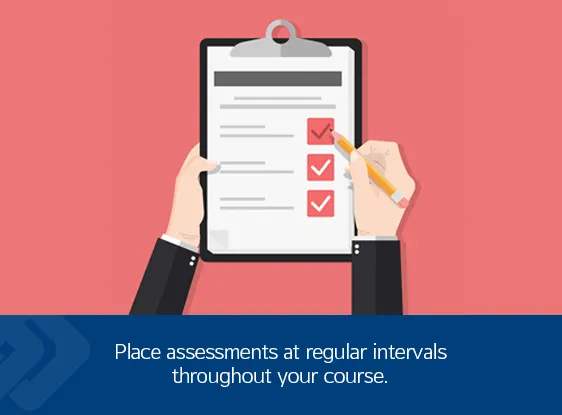
Include assessments at each interval
Since microlearning works on the modular segmentation of content, it provides training and development experts with an amazing ability to add assessments at the end of each module if desired. These assessments should reinforce what is taught to learners and ensure that they are ready to progress to the next topic.
Testing your learning is crucial. Depending on the type of learning management system you are using, you can set completion policies that only allow learners to progress when they successfully complete the assessments. You can also build learning paths that enable learners to test their knowledge at specific intervals of training. This is an excellent way to ensure that learners do not skip modules just to complete the training for the sake of it.
It is important to remember that if learners often skip modules, there may be a problem with your course, or it may not be relevant to the learners. It may be time to rethink your approach.
Include practice files and resources wherever needed
Some software applications are quite complex, and learners need frequent training and hands-on practice to become proficient in their use. To facilitate this learning process, additional practice files are often provided to supplement the course materials. These practice files should be similar or closely aligned to the examples shown in the course, allowing learners to replicate the actions and techniques demonstrated in the modules. By doing so, learners can build their confidence in using the software effectively.
This is common practice when training employees on software applications, data science, market assessment, and business analyst courses. These are used as assessment files for practice and is available to download based on the type of learning management system you use.
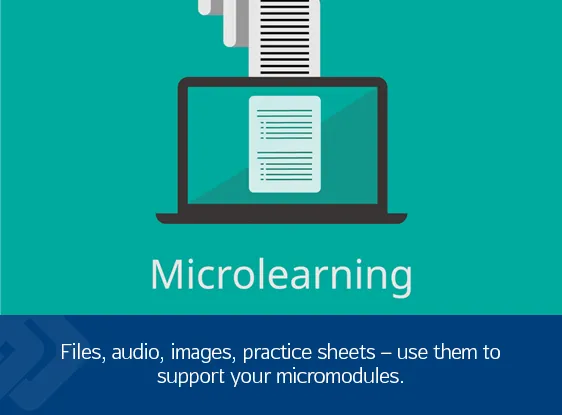
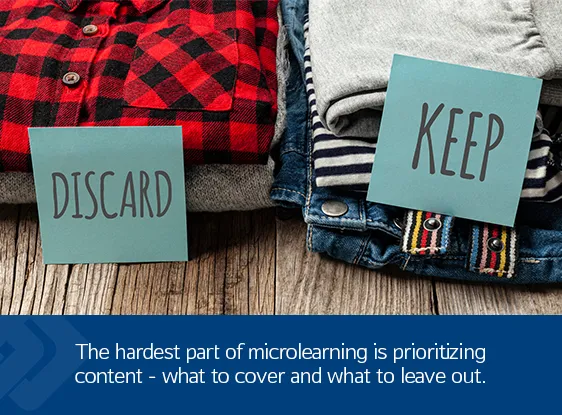
Determining what stays and what goes
Microlearning involves delivering short, focused information or content snippets to learners. Achieving this requires making tough decisions about which bits of content to keep and which to cut out. As we often say, “microlearning is not about what you decide to keep, but about what you decide to leave out.” Cutting out information is a challenging task, and content creators may feel that everything they include is essential for learners. However, microlearning demands a lean format of training that includes only the most critical topics. Each bit of information must provide all the necessary details to complete the module successfully without leaving learners confused.
When creating microlearning content, it is essential to keep in mind three key qualities: clear, concise, and crisp. By emphasizing these qualities, content creators can ensure that their microlearning materials are effective in delivering knowledge to learners.
How can we assist you?
As an organization with over 15 years of experience in eLearning development, we can help your organization create engaging microlearning modules for your learners. We can also assist you in determining the appropriate timing, content edits, and design layouts to keep your learners engaged. Additionally, we can help create animated explainer video segments to simplify complex concepts within your eLearning course.
Also our LMS – Abara is considered to be on the best microlearning platforms used by global businesses to train their employees on a myriad of topics.
You can get started by contacting us at contact@enyotalearning.com or fill this call-back form to get started. To view some of our demo explainer videos.



